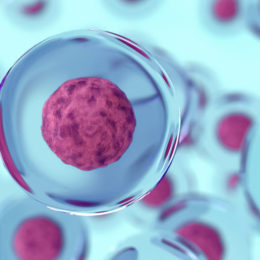How Cancers Start
Decades ago scientists thought cancer had specific causes – chemicals or radiation, etc – that mutated a single cell and that cell grew into a tumor. The causes were termed carcinogens and public and occupational health professionals advised people to avoid carcinogens. The body’s genes interacted with physical carcinogens (e.g. asbestos, sunlight), chemical carcinogens (e.g. arsenic, benzene), and/or biological carcinogens (e.g. viruses, bacteria) to start the cancer. As technology and science have progressed and as we learned more about the body, we understood it wasn’t so simple. There are malignant cells – microscopic tumors – in every organ of the adult body. Individual cells are always going malignant. Most of these tiny tumors or proto-tumors never blow up to a clinical cancer. Why some do and most do not is still a mystery.
What is becoming apparent is that carcinogenesis – the formation and growth of a cancer to a clinical disease – is a multistep process, not an event. It’s a series of events. And an accumulation of mutations.
Carcinogens may affect the cell’s genetic material – the genome – or the chemical mechanism of cell life. Radiation, physical carcinogens such as asbestos fibers, and chemicals can cause cancer. External chemical contaminants are often culprits, although it is impossible to attribute any case of cancer to a particular carcinogen.
Estrogen, although a naturally occurring hormone in the body, is considered a carcinogen because it spurs the growth of microscopic tumors. That’s why breast cancer patients are often given hormone suppressants. Estrogen is classified as a carcinogen (it is a Class I carcinogen in the International Agency for Research on Cancer’s system.) Yet nobody thinks estrogen causes DNA mutations. What it does is promote the growth of tumors. In this case the word carcinogen refers to a substance that causes small tumors to grow to a clinical cancer.
Genomic changes
How many genes are deleted when a cell becomes malignant? A high fraction, actually. There is no answer and the percentage varies from cancer to cancer and patient to patient, but one study found over 10 percent of protein-coding genes were deleted. The fact that the cancer cell still lives shows those deletions don’t prove fatal.
The thing is, it’s not one mutation that makes a cancer, usually. Tumor cells often have “multiple chromosomal aberrations, nucleotide substitutions and epigenetic modifications that drive malignant transformation.”
Recent sequencing of the cancer genome has opened up possibilities. Doctors can know things they couldn’t know before and already drugs have been developed to target proteins that drive cancer growth. These drugs can be given to patients who have a cancer with the mutation of interest. This is a form of targeted therapy.
Cancer Stem Cells
 Scientists have started designating some cancer cells as stem cells, or “cancer stem cells” (CSCs). They are also called cancer progenitor cells. They have similarities to embryonic stem cells, and some suspect they drive cancer growth, but this has not been proven. Most tumors have some CSCs in them. CSCs are more resistant to treatment than other cancer cells. Researchers are looking for ways to attack them. One idea is to interrupt signal transduction pathways the stem cells use to multiply. These include the Notch, Hedgehog, and Wnt pathways.
Scientists have started designating some cancer cells as stem cells, or “cancer stem cells” (CSCs). They are also called cancer progenitor cells. They have similarities to embryonic stem cells, and some suspect they drive cancer growth, but this has not been proven. Most tumors have some CSCs in them. CSCs are more resistant to treatment than other cancer cells. Researchers are looking for ways to attack them. One idea is to interrupt signal transduction pathways the stem cells use to multiply. These include the Notch, Hedgehog, and Wnt pathways.
Heterogeneity as a Sign of Potential Cancer
Scientists have begun trying to predict which pre-cancerous tumors will develop into malignancies by looking at how diverse the cell population is. If a group of cells is heterozygous – many have more than one form of genes – it may resist cancer formation. If a tumor suppressor gene fails to function, that can lead to a loss of heterozygosity. (The tumor suppressor gene p59 is mutated and fails in an estimated half of cancers.) Also, some tumors are just more subject to mutations – this condition is called hypermutability and increases the likelihood of cancer. On the other hand diverse tumors tend to be more resistant to chemotherapy.
Prevention?
The clearest way to prevention is to avoid carcinogens, although it is impossible to avoid all carcinogens and even if you could you would not eliminate all risk of cancer. Tobacco, alcohol, and obesity are considered among the leading causes of cancer. Aside from avoiding carcinogens, you can maintain a healthy weight. Many people wonder about diet, and whether a certain sort of diet or supplements can reduce the risk of cancer. The answer is maybe. A little. The evidence is weak, and if there is an effect of diet on cancer risk, it is probably slim. (Other than avoiding obesity.) Experts advise eating lots of fruits and vegetables, and while the benefits of such a diet for cardiovascular health are clear, it is less clear that plant foods have a preventative effect against cancer. There are suggestions that some nutrients have anti-angiogenic properties, but this has not been firmly established.